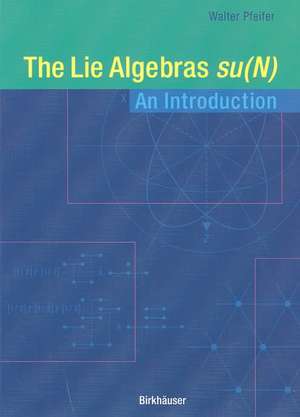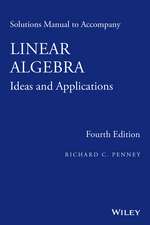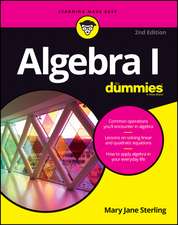The Lie Algebras su(N): An Introduction
Autor Walter Pfeiferen Limba Engleză Paperback – 23 iul 2003
The book features an elementary (matrix) access to su(N)-algebras, and gives a first insight into Lie algebras. Student readers should be enabled to begin studies on physical su(N)-applications, instructors will profit from the detailed calculations and examples.
Preț: 378.54 lei
Nou
Puncte Express: 568
Preț estimativ în valută:
72.43€ • 74.73$ • 60.45£
72.43€ • 74.73$ • 60.45£
Carte tipărită la comandă
Livrare economică 27 martie-10 aprilie
Preluare comenzi: 021 569.72.76
Specificații
ISBN-13: 9783764324186
ISBN-10: 376432418X
Pagini: 128
Ilustrații: X, 432 p.
Dimensiuni: 155 x 235 x 7 mm
Greutate: 0.19 kg
Ediția:2003
Editura: Birkhäuser Basel
Colecția Birkhäuser
Locul publicării:Basel, Switzerland
ISBN-10: 376432418X
Pagini: 128
Ilustrații: X, 432 p.
Dimensiuni: 155 x 235 x 7 mm
Greutate: 0.19 kg
Ediția:2003
Editura: Birkhäuser Basel
Colecția Birkhäuser
Locul publicării:Basel, Switzerland
Public țintă
Lower undergraduateCuprins
1 Lie algebras.- 1.1 Definition and basic properties.- 1.2 Isomorphic Lie algebras.- 1.3 Operators and functions.- 1.4 Representation of a Lie algebra.- 1.5 Reducible and irreducible representations.- 2 The Lie algebras su(N).- 2.1 Hermitian matrices.- 2.2 Definition.- 2.3 Structure constants of su(N).- 3 The Lie algebra su(2).- 3.1 The generators of the su(2)-algebra.- 3.2 Operators constituting the algebra su(2).- 3.3 Multiplets of su(2).- 3.4 Irreducible representations of su(2).- 3.5 Direct products of irreducible representations.- 3.6 Reduction of direct products of su(2).- 3.7 Graphical reduction of direct products.- 4 The Lie algebra su(3).- 4.1 The generators of the su(3)-algebra.- 4.2 Subalgebras of the su(3)-algebra.- 4.3 Step operators and states in su(3).- 4.4 Multiplets of su(3).- 4.5 Individual states of the su(3)-multiplet.- 4.6 Dimension of the su(3)-multiplet.- 4.7 The smallest su(3)-multiplets.- 4.8 The fundamental multiplet of su(3).- 4.9 The hypercharge Y.- 4.10 Irreducible representations of the su(3) algebra.- 4.11 Casimir operators.- 4.12 The eigenvalue of the Casimir operator C1 in su(3).- 4.13 Direct products of su(3)-multiplets.- 4.14 Decomposition of direct products of multiplets.- 5 The Lie algebra su(4).- 5.1 The generators of the su(4)-algebra, subalgebras.- 5.2 Step operators and states in su(4).- 5.3 Multiplets of su(4).- 5.4 The charm C.- 5.5 Direct products of su(4)-multiplets.- 5.6 The Cartan—Weyl basis of su(4).- 6 General properties of the su(N)-algebras.- 6.1 Elements of the su(N)-algebra.- 6.2 Multiplets of su(N).- References.
Caracteristici
Direct access to the Lie algebras su(n) requiring only knowledge from linear algebra Detailed investigation of su(2), su(3) and su(4) Fundamental knowledge for physical applications like the formulation of symmetries of Hamiltonian systems, the description of atomic, molecular and nuclear spectra, the physics of elementary particles












